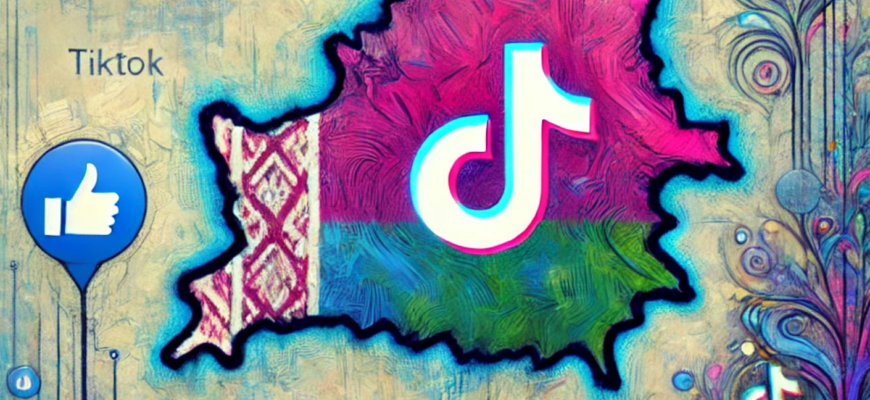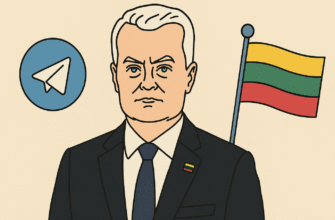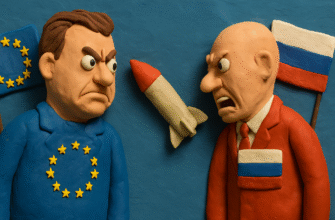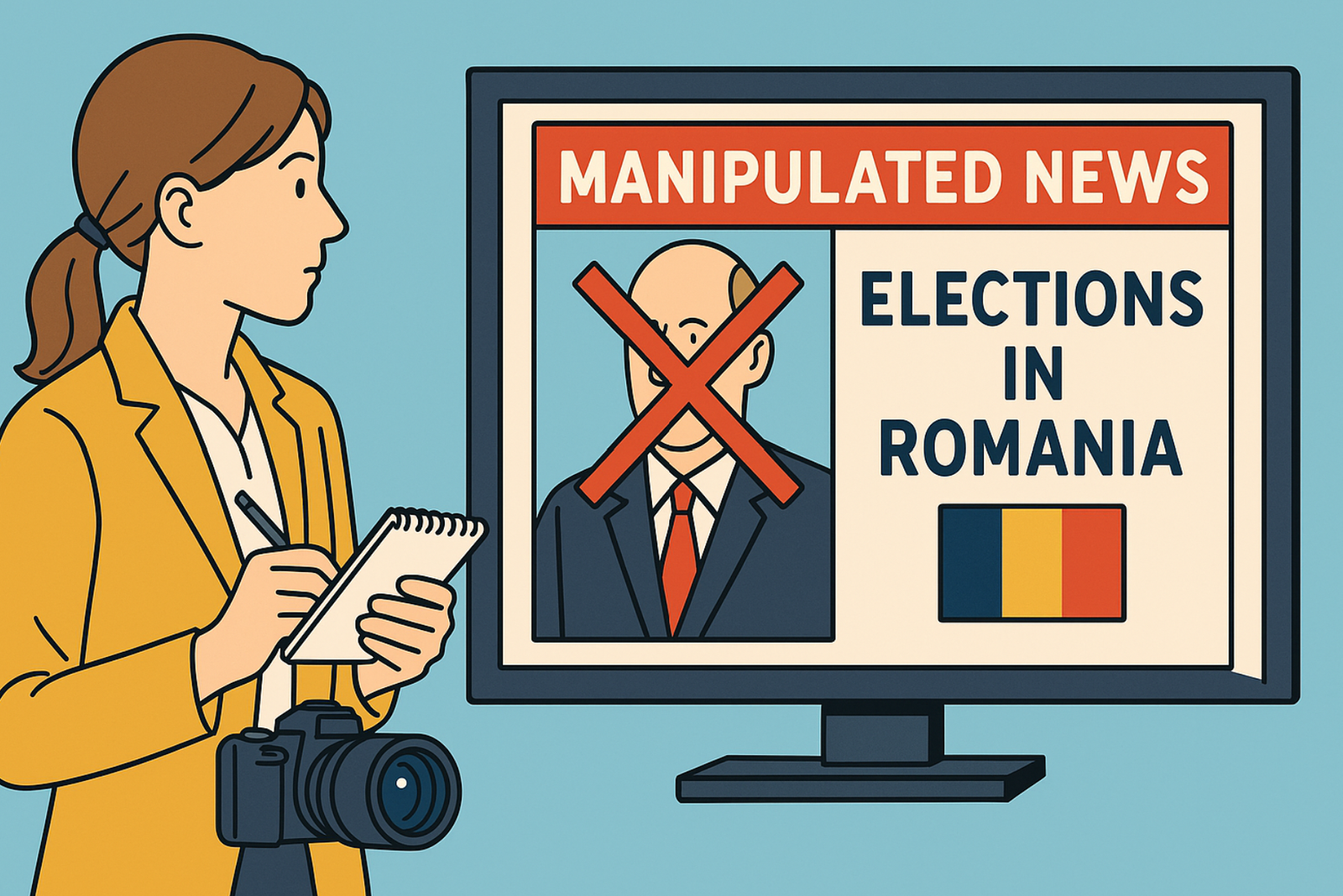On September 17, 2024, the nationwide “Unity Marathon” campaign was launched in Belarus. The official date of the upcoming presidential election was announced on September 23, 2024, so it could be considered part of the pro-government election campaign.
As the Director General of the National Library of Belarus, member of the House of Representatives of the National Assembly, chairman of the “Belarusian Society ‘Knowledge'” Vadim Gigin characterized this campaign:
The “Unity Marathon” campaign will be held in all regions of Belarus on behalf of the Head of State. Large-scale meetings and concerts are planned. The events will continue the patriotic forum held in Minsk on the Day of National Unity and will cover at least 13 cities. Famous Belarusian artists, musical groups, experts, as well as renowned figures from other countries are involved. The “Unity Marathon” is one of the proofs that Belarusians are forming their own political culture without looking back at the West’s opinion.
The current regime decided to work with society using non-traditional methods, especially with young audiences. In recent years, TikTok has become one of the most popular social networks in Belarus, particularly among youth. Belarusian state media actively use TikTok to promote official narratives and propaganda. In the lead-up to the 2025 elections, they published videos aimed at “humanizing” Alexander Lukashenko’s image, showing him in informal settings and emphasizing his closeness to the people. Additionally, authorities engage popular bloggers to promote early voting and other election-related initiatives. This allows them to integrate propaganda messages into entertainment content, making them more appealing to young audiences.
A. Lukashenko also noted the importance of developing TikTok in Belarus. He mentioned that specialists from the United Arab Emirates and China asked him to facilitate the platform’s development in Belarus, which emphasizes TikTok’s strategic importance for Belarusian authorities.
Thus, TikTok has become an important tool in the Belarusian authorities’ arsenal for engaging with voters, especially youth, and promoting official narratives in a format attractive to modern audiences.
TikTok’s operation as social media is largely built on the use of hashtags. Therefore, let’s analyze the hashtag used in this electoral cycle, such as #unitymarathon.
A dataset of 4,354 posts made by 1,076 authors was collected.
Views dynamics and number of posts by day:

The graph clearly shows spikes in the number of posts related to regional events within this marathon. Activity peaks have a “fading tail” – after each spike follows a period of gradual activity decline rather than a sharp drop. The graph shows signs of artificial “warming up” – each subsequent peak of views is higher than the previous one, which may indicate deliberate increase in reach.
Now let’s look at the visualization of posts that gathered the most views:
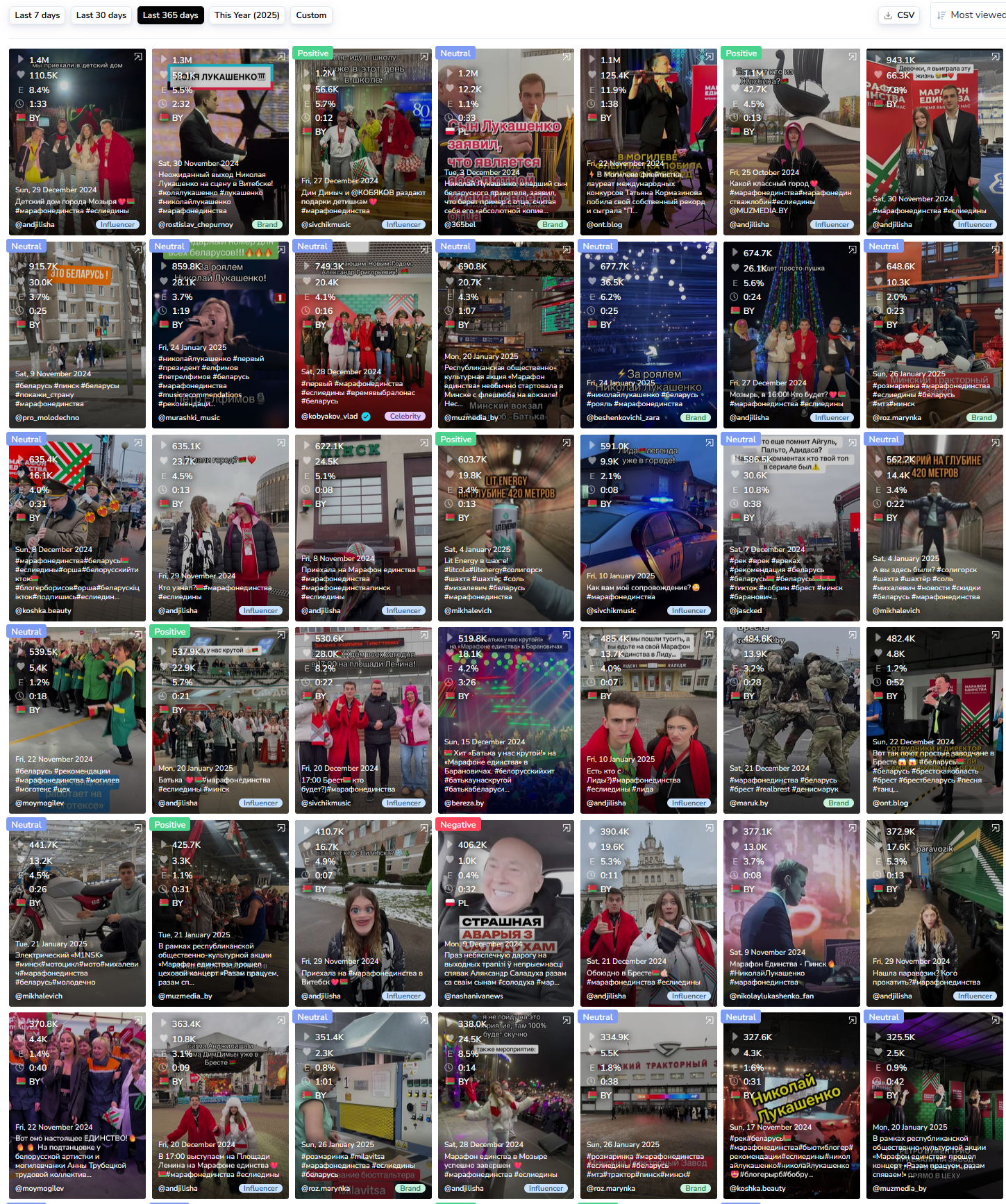
Of course, the promotion of a certain generalized aesthetic stands out. It looks like the existence of a state brandbook, which in many cases repeats Soviet aesthetics, demonstrating the nostalgia of current senior officials in the age category of 45-70. Let’s remember that more than 30 years have passed since the collapse of the USSR. An important element of this campaign was the use of A. Lukashenko’s younger son – Nikolai. Posts with him and his performance as a pianist gathered a large number of views.
Authors who made the most posts and gathered views:
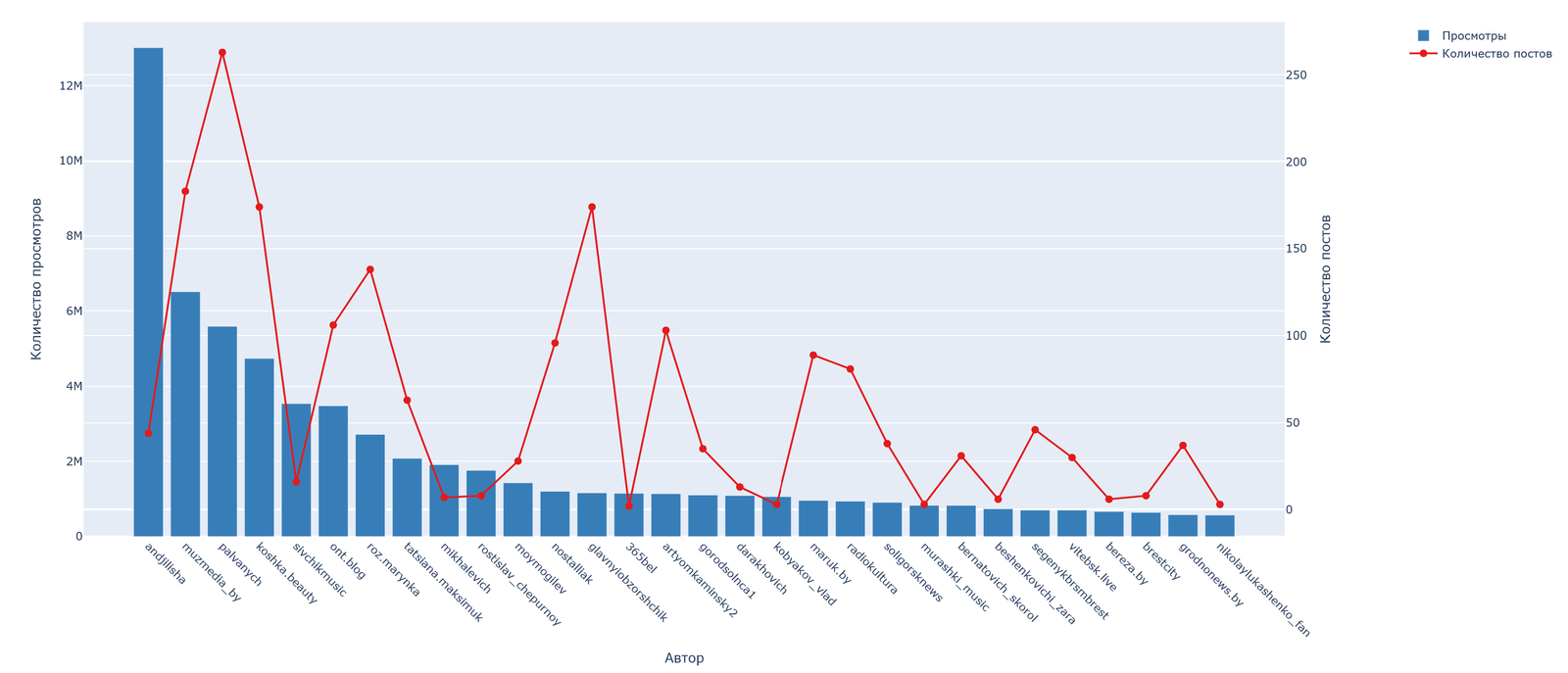
The following main groups of authors are visible here: state media, including regional ones, and engaged influencers.
There’s a clear “ladder” in activity distribution – the first 5-7 authors generate a disproportionately large amount of content. Notably, the views and post count graphs don’t always correlate – some authors with fewer posts get more views. This may indicate varying effectiveness of authors or possible artificial promotion of certain accounts.
Top 30 hashtags by usage:
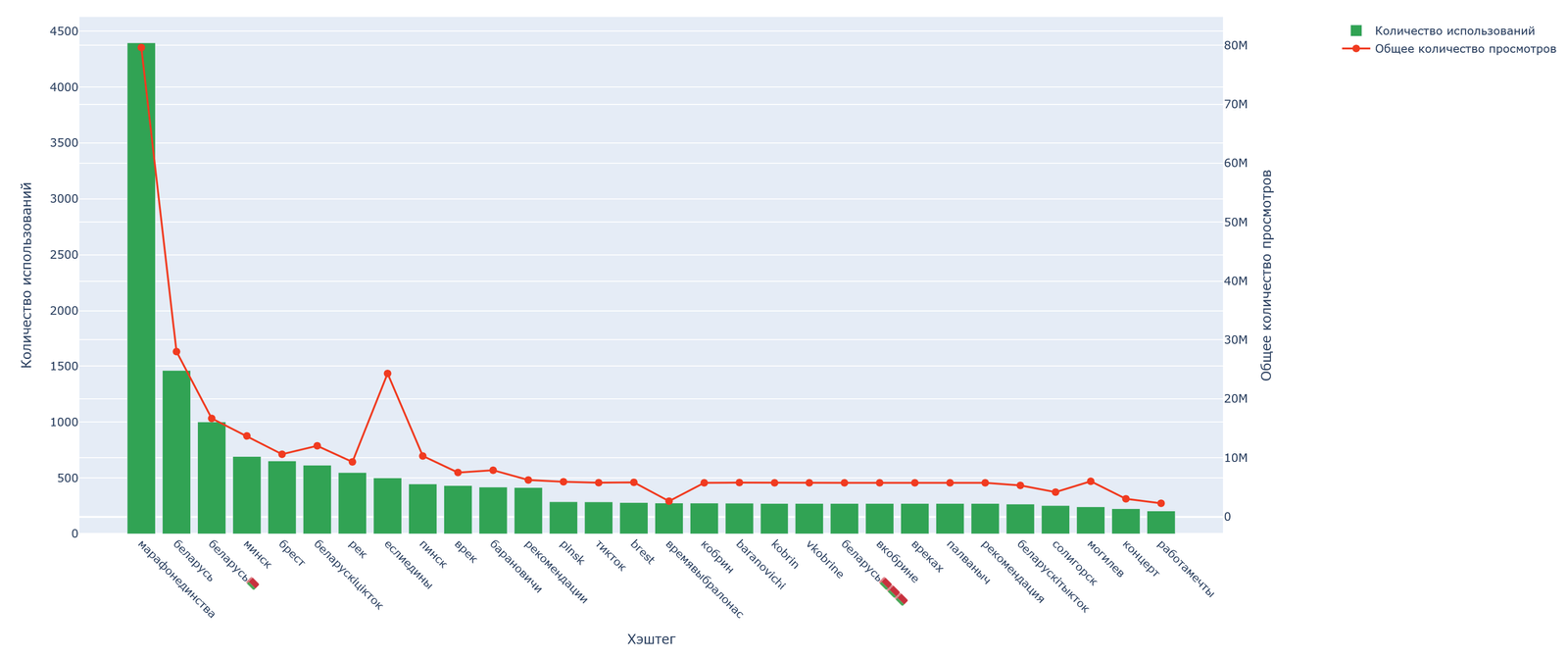
A “long tail” phenomenon is observed – after the first 3-4 most popular hashtags, there’s a gradual decrease in usage frequency. Some hashtags have a high number of views with relatively few uses. This may indicate deliberate promotion of certain tags.
The next will be a graph of the most used words in titles:

It’s worth noting that neither in hashtags nor in most used words was there, as usual, the word “Lukashenko”.
The use of neutral vocabulary may be a deliberate strategy to avoid negative associations. The prevalence of cultural and mass terminology creates an impression of non-political nature of events. The absence of obvious political rhetoric may be a tactical decision to expand reach.
The graph of connections between 50 high-frequency hashtags always looks very illustrative:
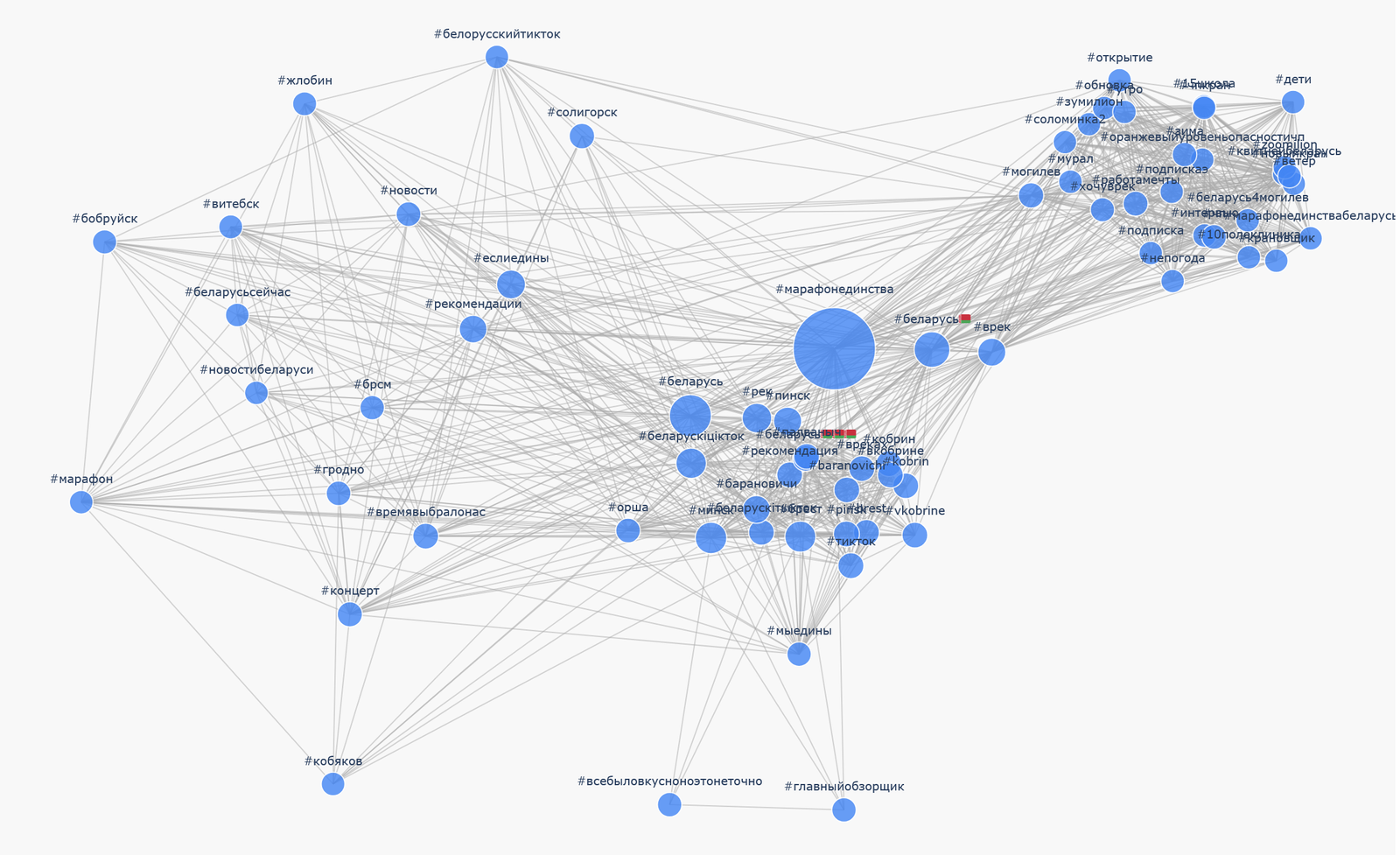
Here we can see other hashtags invented for this campaign, geographical names. The structure of connections resembles a “star” with a central hashtag and peripheral clusters. The formation of thematic subgroups is noticeable, indicating a thought-out strategy for expanding reach. Peripheral clusters are often associated with geographical locations, reflecting the regional nature of the campaign.
The final graph in our analysis will be trigrams:

Structural analysis:
Neutral descriptive constructions dominate with frequencies from 40 to 111 mentions. Phrase grouping around key concepts is noticeable: “action”, “marathon”, “cultural”, “public”. Repetition of semantic constructions with small variations is observed, which may indicate the use of template texts.
Semantic features:
Official-business constructions predominate (“social cultural action”, “republican social cultural”). Temporal markers are frequent (“started September”, “weekend marathon”). Notable use of words emphasizing scale (“large-scale”, “republican”). Constructions related to participation are present (“concerts with participation”, “with participation of Belarusian”).
The top 3 trigrams have almost identical frequency (111, 104, 101), which may indicate coordinated use of certain formulations.
At the bottom of the list (frequency about 43-46) phrases related to greetings and subscriptions are grouped.
Emotionally colored constructions are absent, indicating formal, official nature of communication.
Contextual analysis:
Trigrams form a narrative of a large-scale cultural event. Emphasis is placed on the official, state nature of events. There’s a noticeable attempt to present the event as a public initiative, despite clear signs of centralized organization.
The use of stable speech constructions indicates the presence of a single content formation center. The prevalence of neutral formulations may be a strategy to reach the widest possible audience. Repetition of constructions indicates clear adherence to given communication templates. Lack of variability in formulations may reduce the organic spread of content.
All this further confirms the conclusion about the centralized nature of the campaign with a clearly built communication strategy and control over formulations.
General observations that can be made are that this is a clearly expressed offline campaign that was integrally accompanied by online support as an integral part of the campaign. The campaign demonstrates signs of centralized planning with clear coordination between different participants. Strategic use of influencers and state media for maximum reach is observed. There were practically no actions aimed at counter-propaganda.
Visual content demonstrates certain aesthetics appealing to Soviet heritage.
This publication was developed by a research team under the leadership of Mikhail Doroshevich, PhD.

